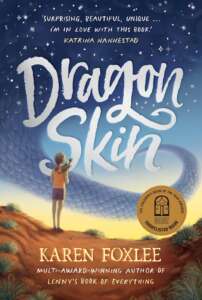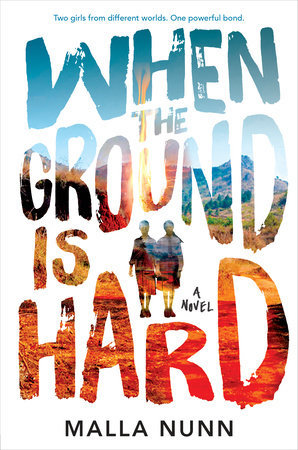I’ve been reading lots of interesting middle grade novels lately and by an Amazing Coincidence, they’re all by Australian authors.

The Detective’s Guide to Ocean Travel is by Nicki Greenberg, best known for her teen-friendly graphic novel versions of literary classics such as Hamlet and The Great Gatsby. Her latest book is a detective story for middle-graders, set in the 1920s on a real-life ocean liner, the RMS Aquitania. Pepper Stark, daughter of the Captain, is very excited to be allowed to sail to New York with him and she promises to be on her best ladylike behaviour. But when an American starlet’s diamond necklace goes missing, Pepper evades her governess and bands together with some new friends to solve the mystery and save her father’s reputation. This novel is full of vivid descriptions of the ship and its routines, with special attention paid to the elaborate meals prepared for the first class passengers. The author clearly did a lot of careful research. I did find the characters were flat and stereotypical and the mystery takes quite a while to develop. However, the concluding chapters are exciting and fast-paced with some clever plot twists. This will appeal to middle graders who are proficient readers, interested in history (particularly those obsessed with the Titanic) and who enjoy Agatha Christie-style mysteries.

Huda and Me is a funny, lively debut novel by H. Hayek, based on her own large Australian-Lebanese Muslim family. Twelve-year-old Akeal, his mischievous little sister Huda, and their five siblings are left at home under the care of a family friend, ‘Aunt’ Amal, when their parents travel to Lebanon. Unfortunately Aunt Amal is completely horrible to all of them except their adorable baby brother, so Huda hatches a plan to escape and Akeal is reluctantly dragged along. Akeal is an endearing narrator — thoughtful, caring and able to draw on hidden reserves of strength when his family is in danger. This book is rightly being celebrated for showing some of the diversity of modern Australian life and depicting the challenges young Australian Muslims can face (for example, in one scene, an Australian boy tries to pull off Huda’s hijab and Akeal bravely stands up for his sister).
However, this book reminded me that diversity in publishing does not mean pushing one particular, progressive viewpoint, but rather, publishing a range of books that reflect all aspects of society, including conservative, patriarchal, religious viewpoints. There is nothing subtle about this author’s message. All the male characters — Akeal, his father, their elderly neighbour, the male flight attendant, a security guard at the airport, a taxi driver who offers the children his own home-cooked lunch — are strong, compassionate heroes who are good at their jobs and always do the brave, right thing, even if it sometimes means disobeying the rules. (The boy who abuses Huda rapidly repents when Akeal confronts him, then he helps Huda and Akeal escape.) The villains — deranged Aunt Amal and a belligerent female flight attendant — are all women who don’t have children. Girls can be as feisty as Huda until puberty, this book suggests, but after that they need to be excellent at cooking (like Huda’s twin sisters), proficient at hair, make-up and beauty treatments (Huda’s eldest sister), then get married and have at least half a dozen children (Huda’s saintly mother, who is so passive that when she finds out her beloved children are in danger, her response is to cry and leave her young son and husband to sort out the problem). According to this book, girls who don’t fulfil their God-given destiny to become housewives and mothers will either turn into crazy baby kidnappers or ice-hearted, child-hating career women. Do I agree with these anti-feminist messages? Obviously not. Would I give this book to young readers? Sure, it’s a fun, Dahl-esque read with good male role models. But I’d then give those readers one of the many middle-grade books that show that girls can also grow up to be strong, compassionate and competent, whether they choose to marry and have children, or not.

For example, Elsewhere Girls by Emily Gale and Nova Weetman, an enjoyable time-slip adventure, in which thirteen-year-old Cat from Sydney finds herself in the body of a teenage girl in 1908, who just happens to be Fanny Durack, future Olympic swimming champion. There’s lots of amusement as Fanny, living in 2021 in Cat’s body, tries to make sense of mobile phones, microwave ovens and aeroplanes. Meanwhile, Cat is horrified by her new life as one of ten siblings living above a Surry Hills pub, where it takes an entire day to do the laundry and girls aren’t allowed to swim in front of men. The authors acknowledge their debt to classic time slip novels, including Ruth Park’s Playing Beatie Bow, one of my favourite books. There is some serious commentary in Elsewhere Girls on how much life has improved for girls and women, but this is aimed at middle-graders so it avoids the more grim, confronting realities of life in Edwardian Sydney slums (unlike Playing Beatie Bow, in which poor Abigail gets kidnapped and locked in a brothel). Elsewhere Girls is recommended for about twelve years and up, particularly girls interested in history and feminism.

Footprints on the Moon by Lorraine Marwood is set in more recent history, in 1969. In her first year of high school, Sharnie is dealing with a lot — her best friend turning into a Mean Girl, the death of her beloved grandmother, and family conflict due to her elder sister Cas protesting against the Vietnam War. Sharnie makes a new friend who is grieving over the death of her brother, a war conscript, and the two friends join forces with Cas to celebrate the moon landing and protest against the war in a creative way. This is a verse novel, a collection of beautifully written poems with careful use of metaphor and moon imagery, arranged in narrative form. It’s well researched and has an important message, so teachers and literary award committees will love it, but I must admit I found it a bit dull and worthy. However, I’d recommend it for thoughtful young readers dealing with the death of a grandparent or those who are interested in the moon landing.

Are You There, Buddha? by Pip Harry also has a narrator in her first year of high school, also dealing with a range of problems, but this was a delight to read. Bee’s mother has abandoned her to live in an Indian ashram, her best friend Leon is showing worrying signs of having a crush on her, her well-meaning stepmum keeps meddling in her life, a Mean Girl at swimming practice is making life difficult … and worst of all, her body is changing, with stretch marks, new breasts and the dreaded start of periods. Bee is such a lively, funny, sweet narrator, always trying to do the right thing, although not always succeeding. I especially liked the realistic depiction of menstruation — cramps and blood stains and trying to insert a tampon for the first time and the inevitable bad timing of the start of a period (an especially annoying thing for Bee because she’s a competitive swimmer). The only odd thing about this book is that it’s described as a verse novel, but to me, it just seemed like a book written in clear, simple prose with odd punctuation, with sentences broken up to create more white space on the page and make it more appealing to reluctant readers. There’s nothing particularly poetic about the language:
“I open the door
and he tips
a pile of picture books
on the floor.”
So, I don’t think it’s a verse novel but it is an excellent read. I’d recommend it for girls (and boys) aged about ten years and up.

Finally, Dragon Skin by Karen Foxlee is an exquisitely written novel, a sad, gritty but hopeful story about a ten-year-old girl living in outback Australia in dire circumstances. Pip’s mother’s boyfriend is abusive and her only school friend has died. Then Pip finds a tiny, half-dead dragon by the waterhole and her quest to save ‘Little Fella’ and return him to where he came from changes her in profound ways. She makes new friends and ultimately moves on to a better life. The descriptions of Mount Isa are beautiful, each character is real and interesting, and the publishers have produced a gorgeous hardcover edition with lovely cover art, endpapers and line drawings. I’ve no doubt this book will win all the awards. However, it’s definitely for thoughtful, mature readers and is possibly a book that will appeal more to adult readers than child readers.

 Unfollow: A Journey from Hatred to Hope, Leaving the Westboro Baptist Church by
Unfollow: A Journey from Hatred to Hope, Leaving the Westboro Baptist Church by  I also liked The Edible Balcony by
I also liked The Edible Balcony by 

 In fiction, I enjoyed Sugar Town Queens, the latest YA novel from
In fiction, I enjoyed Sugar Town Queens, the latest YA novel from  Finally, Cat Problems by
Finally, Cat Problems by 

 When the Ground is Hard by
When the Ground is Hard by  I also enjoyed Room for a Stranger by
I also enjoyed Room for a Stranger by  Finally,
Finally,